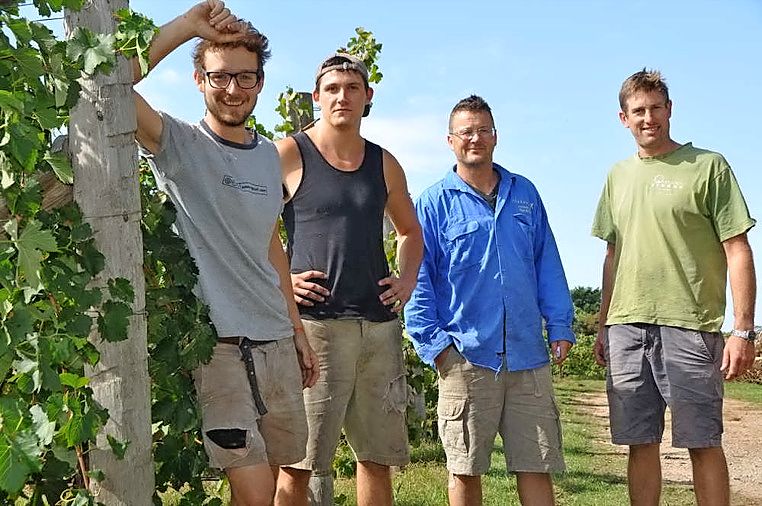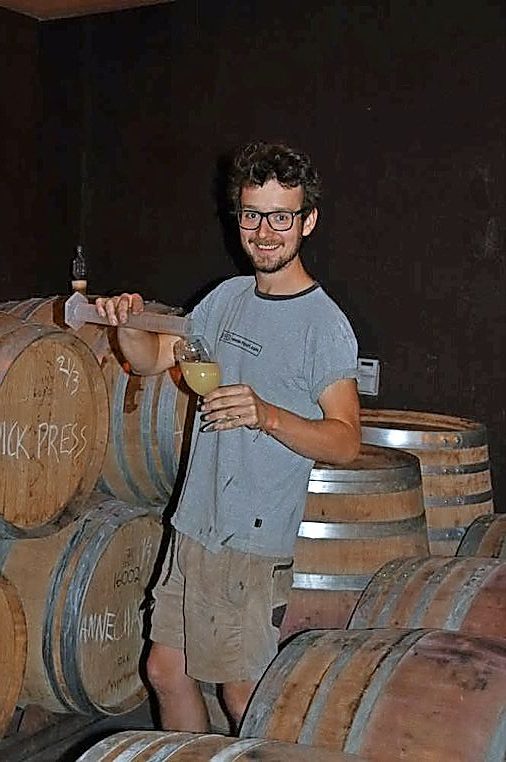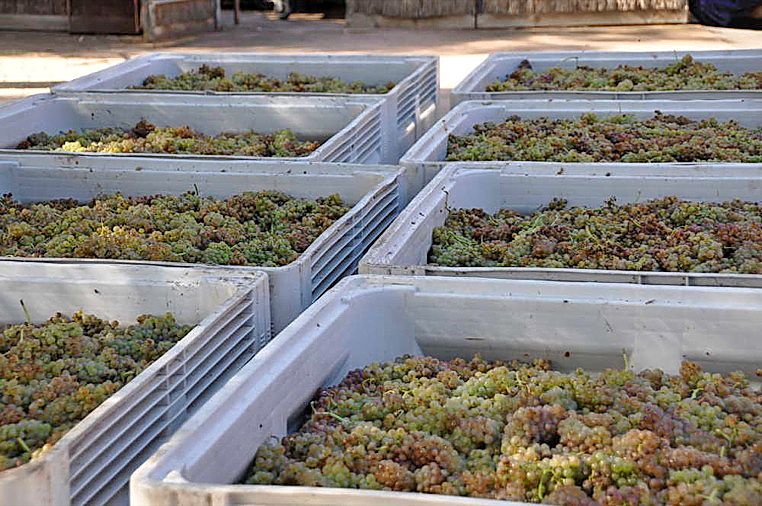Matt ‘Largey’ Large was always interested in wine; the 26-year-old spent many years working in hospitality, always drawn to venues with impressive wine lists.
He then lived in Spain where he managed a wine bar. But making wine seemed like an unattainable goal.
Then, two-and-a-half years ago, when he was back in Australia, he knocked on the door of Shadowfax asking for a job. It was around the time the Werribee South-based winery had just acquired another vineyard – they took him in with open arms.
Today he works as a cellar hand alongside Shadowfax winemaker Matt Harrop, viticulturist Alister Timms and fellow cellar hand Simon Langton.
“The job varies so much … it’s a job of extremities, that’s why I love it,” he explains.
“One day you’re planting in trenches, up to your neck in mud … then that night, you’re pouring wine and enjoying a fine meal … then the next day, you’re in a cellar making wine – I’ve never had a job with so many different things happening within 24 hours.”
Largey works across all Shadowfax vineyards – the one at Werribee South is where the shiraz, grenache, carignan and mondeusse varieties are grown.
Three vineyards in the Macedon Ranges produce premium chardonnay, pinot noir, and pinot gris grapes.
Another in Geelong also produces chardonnay and pinot noir.
“In Werribee, we’re close to the ocean, so that ocean maritime climate is handy for the Mediterranean and French styles,” he says.
“Macedon is 700 metres above sea level, so completely different. We’re lucky to be able to look after vineyards in dramatically different climates.”
Largey says the climate for growing the grapes is crucial to the wine that’s made.
“Some people think the fruit comes in, we wave a magic wand, and then there’s wine …that’s not the case. Wine is only as good as the fruit … we do a lot of hard work in the vineyard throughout the year.”
Winemaker Harrop agrees, explaining a lot of effort goes into making sure the grapes are picked at the perfect time.
“We squeeze the grapes by hand to see if they’re ready … if we pick them too early, it makes an acidic, thin wine. When they’re picked too late, they’re really alcoholic.
“If there’s no flavour – why pick it at all?”
Once picked, the grapes go through the press. Largey describes this as the “workhorse”.
“We throw whole bunches in, and on the inside, a large bag inflates when filled with compressed air – and the juice comes out.”
The skin is left on for red wines to give them colour. Shadowfax churns through 200 tonnes – or 200,000 kilograms – of grapes a year.
Wines are then fermented in either a tank, an open fermenter, or in barrels in the cellar.
“There are two things we keep an eye on while it’s fermenting, the sugar level and the temperature,” Largey says.
“The sugar turns into alcohol, and it needs to be kept cool.”
The underground cellar sits around 15 degrees Celsius all year.
The time the juice spends fermenting depends on the grape variety. Some are ready in six months, while a premium shiraz can take up to 15 months.
While some winemakers rely on lab tests and science to tell when something is ready, Largey says the team at Shadowfax are a bit more old-school.
“We do look at this stuff too, of course, but we let our senses guide us, not numbers.
“We smell it, taste it, and look at it … that’s when you know a good wine is ready.”
Shadowfax wines are sold across the world. The winery is located at K Road in Werribee South.











